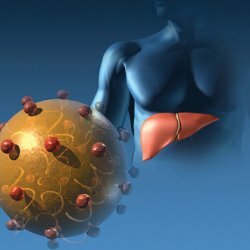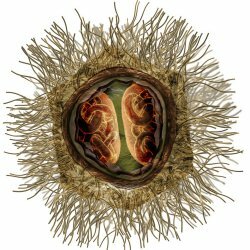Roseola: Symptoms, Causes, Methods of Treatment and Prevention
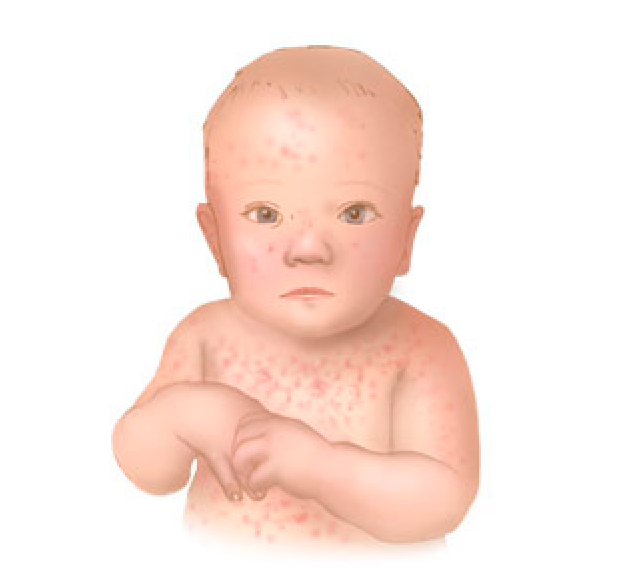 Roseola is a viral disease of early childhood, which is diagnosed very rarely, but in reality they get sick very often.The names of this ailment, and there are several of them( sudden exanthema, children's three-day fever, etc.), very clearly describe the main symptoms of the disease: the sudden appearance of rose-oleic rash after a three-day fever.
Roseola is a viral disease of early childhood, which is diagnosed very rarely, but in reality they get sick very often.The names of this ailment, and there are several of them( sudden exanthema, children's three-day fever, etc.), very clearly describe the main symptoms of the disease: the sudden appearance of rose-oleic rash after a three-day fever.
Roseola: the causes of
Note: baby roseola is a clinical manifestation of the primary infection of the body with herpes simplex virus type 6.Later this virus can cause in children and adults lymphadenopathy, chronic fatigue syndrome and other diseases of the nervous system if there are predisposing factors( immunodeficiency states, stresses, etc.).
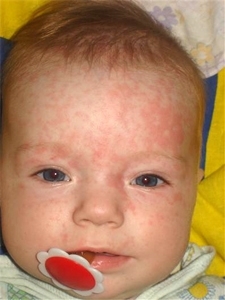 The main transmission route of the herpes simplex virus type 6 is airborne( the virus is contained in saliva and nasopharyngeal mucus of the patient).The susceptibility of children to this infection is very high, but the clinical manifestations of the disease in the case of infection do not arise in all.The maximum incidence of roseola occurs between the ages of 6 months and 2 years.The smallest babies are protected from this infection by maternal antibodies, however with time the amount of these antibodies decreases, so after 6 months, babies can already get sick with roseola.If the baby is breastfed, the titre of the protective immunoglobulins in his blood can last a little longer.
The main transmission route of the herpes simplex virus type 6 is airborne( the virus is contained in saliva and nasopharyngeal mucus of the patient).The susceptibility of children to this infection is very high, but the clinical manifestations of the disease in the case of infection do not arise in all.The maximum incidence of roseola occurs between the ages of 6 months and 2 years.The smallest babies are protected from this infection by maternal antibodies, however with time the amount of these antibodies decreases, so after 6 months, babies can already get sick with roseola.If the baby is breastfed, the titre of the protective immunoglobulins in his blood can last a little longer.
Regarding the roseo-olympic rash in this disease, it does not pose a danger to others, so when it comes into contact with it, you can not get herpes virus type 6 infection.
Roseola: symptoms
As a rule, after a week the field of infection with the herpes virus in a child raises the body temperature to 38-39 degrees, the baby becomes sluggish, refuses to eat.He may have nasal congestion and clear discharge in a small amount.Coughing, redness of the throat and some other catarrhal phenomena usually with roseola no.
High temperature is kept 3, less often 5 days.After its normalization, the abdomen, back, neck, and face of the child are sprinkled with pink and red small specks on the forehead of an absolutely normal state of health( therefore, this disease is called a sudden exanthema).This rash does not itch, does not bother the baby and disappears without a trace a few days after the appearance.Thus, the total duration of this disease in children with normal immunity does not exceed 7-10 days.
Important: roseola is one of those diseases, a strong increase in body temperature in which young children can provoke the appearance of febrile seizures, especially if this has happened before.Therefore, parents should know that involuntary muscle contraction in a child against a background of fever is, most likely, febrile convulsions.Some symptoms may precede them:
- cooling of the hands and feet at high body temperature;
- skin blushing;
- slight chattering of the chin, pens and legs.
Such convulsions usually last about a minute and pass on their own without any negative residual effects.To the attack does not happen again, it is necessary to knock down the child's temperature.
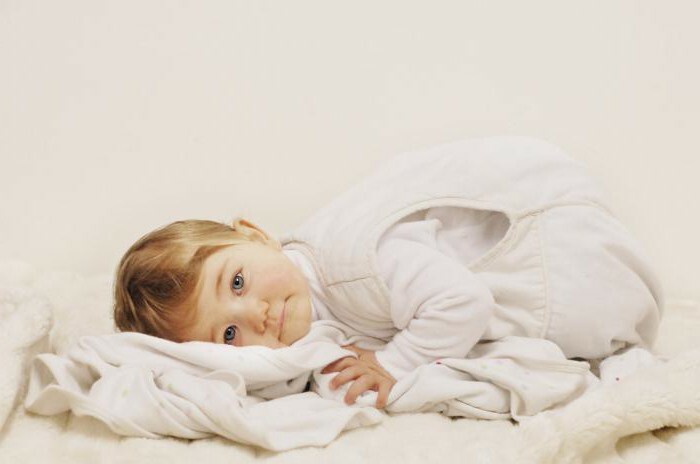
Diagnosis
Very often, rosaola is confused with allergies to antipyretics or other medications.In addition, a similar course of the disease can be observed with rubella and some enterovirus infections.Without special tests, it is very difficult to establish whether a herpetic infection actually occurs, so doctors rarely diagnose roseola.Well, the specific laboratory diagnosis of roseola is usually carried out in a hospital, when the child enters a serious condition and it is necessary to identify the exact cause of the disease for the purpose of prescribing the correct medication.
Treatment
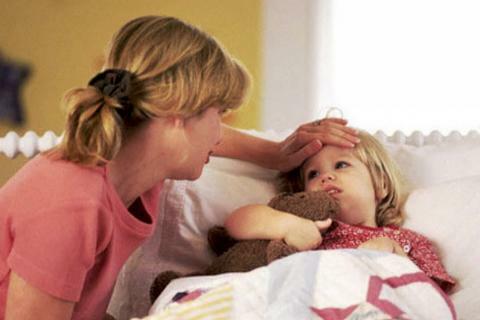
Antiviral treatment for roseola is generally not carried out.The main therapeutic measures are aimed at reducing body temperature and reducing intoxication.As antipyretic drugs for the treatment of children, paracetamol and ibuprofen are used, and excessive fluids are used to eliminate intoxication. It is also important to create comfortable conditions for the child:
- remove all sources of noise;
- not strongly wrap up the patient so as not to disrupt the heat release of the body;
- maintain the room temperature at 20 degrees;
- well ventilate the nursery and every day do a wet cleaning.
No additional therapeutic measures are taken at the stage of rash appearance.
Important: If the baby already had episodes of febrile seizures, the body temperature should not be raised above 38 degrees.If the cramps all the same began, it is necessary to open the child, put on his side, holding his arms and legs, so that there is no trauma.After the end of the attack should immediately give the patient an antipyretic and call an ambulance.
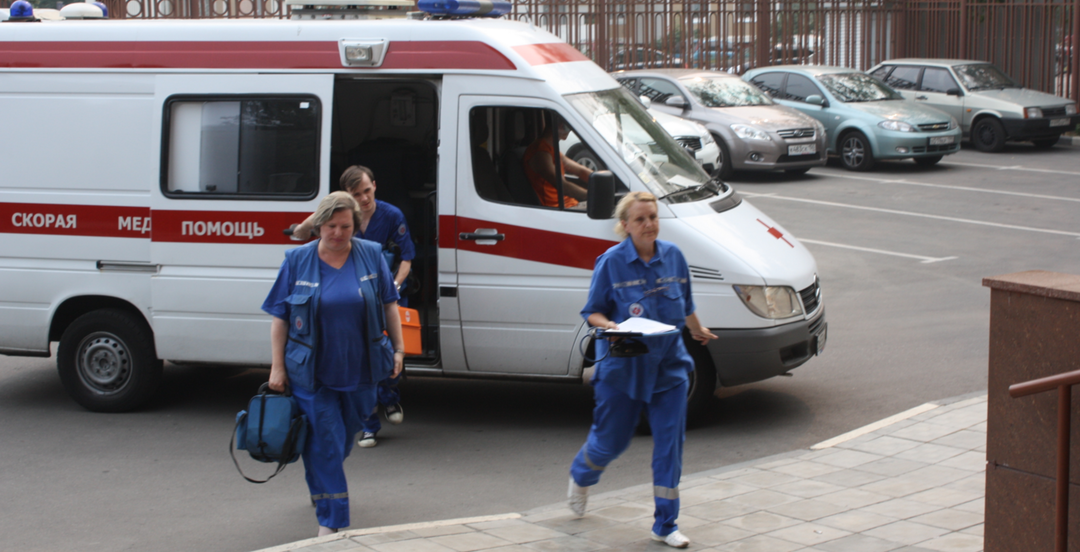
Prevention
To prevent infection with the herpes virus is very difficult.Therefore, the main thing that parents can do is to strengthen the child's body so that in the case of infection the disease can flow more easily.To do this, it is necessary to feed the baby with healthy food( babies - breast milk), walk more on the street, observe a full-fledged sleep regime for the child's age, ensure cleanliness and optimal temperature conditions in the children's room.
Zubkova Olga Sergeevna, medical reviewer, epidemiologist-doctor

